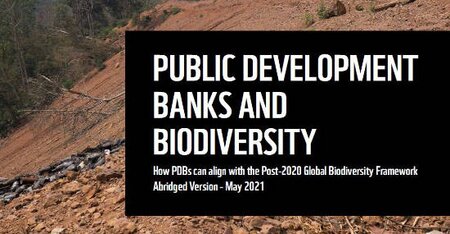International Lenders Requirements
IFC PS6
The Biodiversity Consultancy has played a significant role in shaping the IFC's PS6 standard since 2012, giving us a deep in-depth technical knowledge of the standard. Our extensive portfolio and detailed working knowledge also includes other lender's standards including the Equator Principles, EBRD's PR6, ADB's ESS6, and AfDB's OS3. This enables us to provide expert biodiversity advice, technical support, and capacity building to ensure alignment with a wide range of international lender's requirements.
Organisations benefit from our specialised expertise in biodiversity risk screening, Critical Habitat Assessment, Residual Impact Assessment (RIA), Biodiversity Action Plans, offset feasibility studies, offset design and implementation planning, as well as monitoring and evaluation of impacts and offsets. We also offer guidance on Environmental and Social Impact Assessments aligned with lending standards, including strategic biodiversity baseline data collection, monitoring, and biodiversity-related stakeholder engagement.
International Finance Corporation (IFC) Performance Standard 6 (PS6) represents international best practice for biodiversity management. The objectives of PS6 are to protect and conserve biodiversity and habitats, encourage the implementation of the mitigation hierarchy and promote sustainable management of living natural resources.
We work closely with IFC and other lenders, advising on the design of their policies and standards, and helping assess project alignment. Through this close working relationship, we offer a unique skill set to clients wishing to fulfil the requirements of PS6.
The basic targets are clear and simple: a net gain for Critical Habitat and no net loss for Natural Habitat. In practice, defining Critical Habitat and demonstrating net gain with the appropriate level of confidence can be challenging. Key steps for aligning with PS6 comprise:
- Critical Habitat Assessment (PS6 Paragraph 16): assessing the biodiversity importance of an area (e.g. threatened and restricted-range species and ecosystems, protected areas) in comparison to their global distributions or population sizes
- Mitigation Design (PS6 Paragraph 17): described in a Biodiversity Action Plan, for impacts on Critical Habitat and Natural Habitat
- Offset Design (PS6 Paragraphs 10 & 18): design of compensatory offsets for significant residual adverse impacts, “after appropriate avoidance, minimisation and restoration measures have been applied”.
- Protected Area assessment (PS6 Paragraph 20): meeting the requirements for Critical Habitat and Natural Habitat, where appropriate
- Monitoring and Evaluation Design (PS6 Paragraphs 17-18): a long-term programme sufficient to assess the status of Critical Habitat and demonstrate biodiversity gains.
Application of PS6 is very site-specific, depending on the species, ecosystems, quality of baseline data and existing biodiversity management. Fulfilling the requirements of PS6 is a significant undertaking and alignment is best initiated at the very start of project planning and integrated with the development of an environmental impact assessment.
In 2012, QMM Madagascar, with our support, set out to align to IFC PS6 standards by achieving net gain for ‘Critical Habitat’ and no net loss for ‘Natural Habitat’
In partnership with Fauna & Flora International (FFI) and local partners, we helped the Oyu Tolgoi project in Mongolia towards meeting the requirements of IFC PS6/European Bank for Reconstruction and Development (EBRD) Performance Requirement 6, resulting in the first publicly available complete PS6 documentation, which has set a benchmark for other large infrastructure projects.
Make Nature Your Business
Mitigation Hierarchy
Receive the strategic guidance to mitigate the nature risks that your business might pose, in line with the global standards.
Critical Habitat Assessments
Enable your business to identify and verify Critical Habitat-qualifying biodiversity in proximity to your site-based projects in alignment with the lender requirements.



